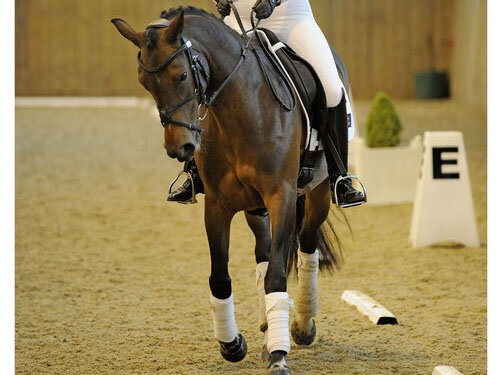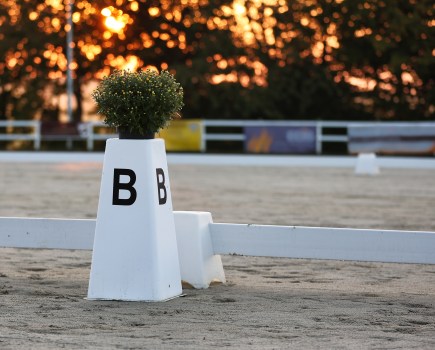Do you struggle with shoulder-in? Instructor and dressage rider Claire Lilley explains the simple rules behind a five star performance.
First, make sure that you’re turning your horse’s rib cage with your legs and hips, and that you’re turning your upper body enough too.
Avoid using too much inside rein, as this blocks the inside hindleg and prevents your horse from stepping forwards under his body, meaning that he can’t then bend his body properly.
If you have a problem on one rein, make sure you train your horse equally on both reins and don’t get hung up on riding the worst one.
Change direction frequently, and use the ‘good’ rein to get the feel of a correct shoulder-in, then try on the more difficult rein. Eventually your horse will even up.
Simple rules to remember
- Always carry your hands parallel, as hanging too much on your outside rein will inhibit bend through your horse’s body.
- Keep an even contact on both reins and don’t get too hung up on ‘inside leg to outside hand’. You need both hands, both legs, and to sit evenly on both seat bones.n The only weight to the inside is in your inside stirrup by pressing down slightly on your inside foot. Your outside foot, meanwhile, should press down and back.n Sitting evenly on both seat bones enables you to control both hindlegs, stopping your horse from swinging his haunches away to the outside, thus avoiding bending his body. n Make sure you keep your horse’s neck in line with his withers. You need just enough flexion to the inside to see his inside eye.
- Keep your chin in line with your chest. If you turn your head more than your shoulders, so will your horse.n Too much neck bend can cause the haunches to drift out, making it impossible for your horse to work on three tracks.
- When riding shoulder-in, if you can see the side of your horse’s face, you have too much neck bend and are riding neck-in, not shoulder-in.
TRY THIS…
To improve your shoulder-in, perfect your 10m circles, as the correct position for a shoulder-in is the same as the first step of the circle.
Half-halt when your horse’s shoulders are just coming off the track to get the correct angle — his inside hindleg and outside foreleg should be on the same line or track.
From this position, use a bit more inside leg — knee, thigh and calf — to press your horse along the track.
Another good exercise is to ride small figures of eight. Place two cones or markers on the centre line of the arena, and practise changing bend exactly between them, taking three steps to change bend — ie, old bend, straight, new bend.
This can be ridden in walk and trot, and also in canter with a simple change through walk for three steps.
Don’t miss the latest issue of Your Horse Magazine, jam-packed with training and veterinary advice, horse-care tips and the latest equestrian products, available now.









